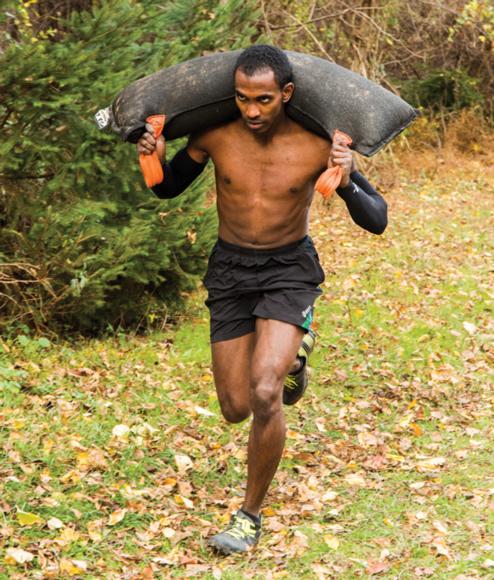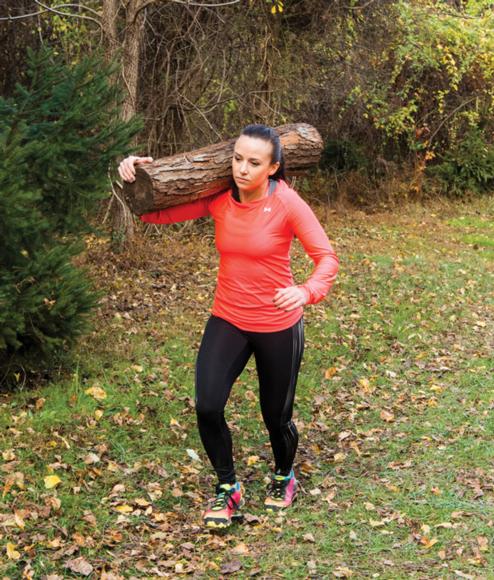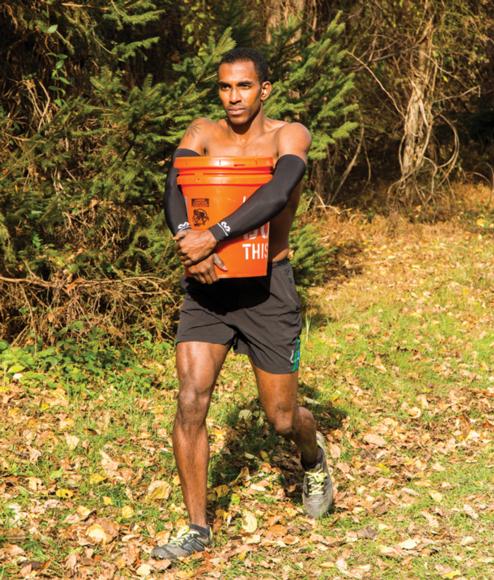Common Obstacles for Muscular Endurance
This is an excerpt from Essentials of Obstacle Race Training, The by David Magida,Melissa Rodriguez.
Endurance
Endurance is the greatest physical requirement in being prepared for an obstacle race. Endurance covers both aerobic capacity and muscular ability. Aerobic endurance taxes your cardiovascular and respiratory systems, while muscular endurance challenges the capacity of your muscular and skeletal systems to perform sustained work over time. Aerobic endurance covers activities like running - the main activity in obstacle racing - spread over the course of steep hills, muddy terrain, and a variety of other surface types. Muscular endurance covers sandbag, log, and bucket carries as well as tire and cinder-block drags.
Sometimes aerobic endurance and muscular endurance are worked at the same time in an obstacle race. For example, long periods of running, a swim across a stretch of water, or lifting a heavy object uphill will all tax your heart and lungs. However, these challenges will also call on your legs and arms, which need to be strong enough to get you through a long run, swim, or steep climb. Training to endure the accumulation of lactic acid in your muscles or to keep your feet moving after you've already been ascending an arduous course can be a challenge. Developing a high level of endurance can take months of consistent training and preparation.
Common Obstacles for Muscular Endurance
Sandbag Carry
The sandbag carry tests strength in picking up the sandbag, aerobic and muscular endurance in moving it, and mental fortitude in carrying a 20- to 60-pound (9-27 kg) bag on the shoulders up and down a large hill. Generally, these carries are not performed on flat ground unless the terrain is technical. The sandbag carry tests muscular endurance in the legs, specifically in the calves and quads, as well as spinal stability (lower-back strength). Many participants find their ability to run fast is zapped by a difficult sandbag carry and that their legs are more prone to cramps after the carry as well.

How to Conquer It
Set the bag evenly across your shoulders. Try not to lean too far forward, even as you go uphill. If you can, hold it with only one hand so you can pump your other arm to power your legs. That single-arm grip should be a reach across your body to the opposite shoulder, changing hands when your fingers tire.
Log Carry
Similar to the sandbag carry, the log carry challenges the same muscle groups but demands a bit more shoulder, biceps, and grip strength because the log lacks the flexibility of a sandbag and needs to be held more securely to the shoulder. Usually a log carry is up a hill and will test your pain threshold because the bark can be uncomfortable on your skin. Logs vary in size and weight but generally weigh 30 to 60 pounds (14-27 kg).

How to Conquer It
Set the log on one of your shoulders and grip it with the hand on that same side, leaving your other arm free to pump and keep your legs driving.
Bucket Carry
For many racers, the bucket carry can be a game changer - or their worst nightmare. The bucket carry requires you to fill a 5-gallon (~20 L) bucket with rocks, water, or sand up to a fill line, then carry it around a loop. The bucket carry tends to challenge your body a bit differently than a log carry or sandbag carry because you need to hold it in front of you, above your hips. The bucket carry places a tremendous amount of strain on the spinal erectors (muscles in your lower back) as well as your grip strength and biceps muscles as you work to hold the bucket stable.

How to Conquer It
The grip is critical here. Holding the bottom with both hands will quickly wear out your grip strength. Instead, opt to wrap your arms around the bucket, pinning it high up against your chest. Place the fingers of one hand under the bucket and clasp that wrist with the opposite hand. That will take the weight off your fingers.
Learn more about The Essentials of Obstacle Race Training.
More Excerpts From Essentials of Obstacle Race Training, TheSHOP

Get the latest insights with regular newsletters, plus periodic product information and special insider offers.
JOIN NOW


